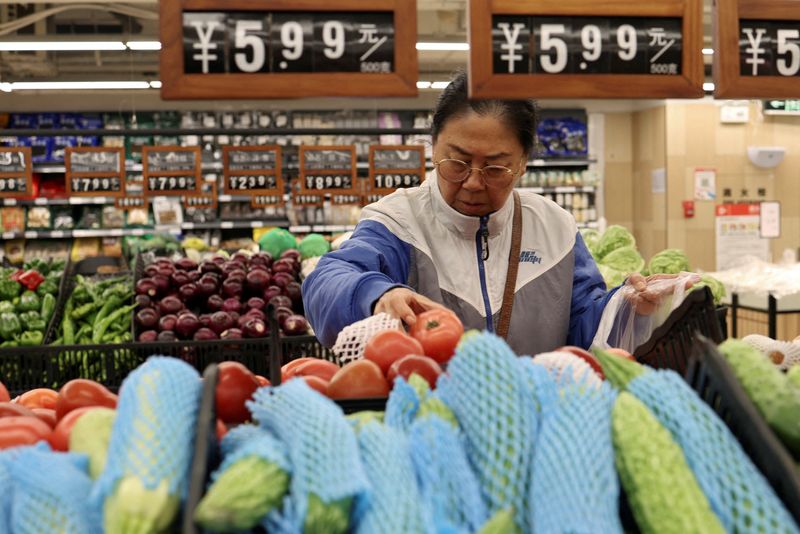By Kevin Yao
BEIJING (Reuters) -Chinese government advisers are stepping up calls to make the household sector’s contribution to broader economic growth a top priority at Beijing’s upcoming five-year policy plan, as trade tensions and deflation threaten the outlook.
Leaders are gathering proposals for their 15th five-year plan, a voluminous document that lays out priorities up to 2030. The plan is expected to be endorsed at a December Communist Party conference and approved by parliament in March.
Policy advisers told Reuters while they expect the document will elevate household consumption to a top goal in principle, it is likely to stop short of laying out an explicit target.
Household consumption currently accounts for 40% of gross domestic product – some advisers propose China should aim for 50% over the next two five-year cycles.
Economists have long urged Beijing to switch to a consumption-led economic model and rely less on debt-fuelled investment and exports for growth.
While China has so far largely withstood pressures from higher U.S. tariffs, fresh worries about industrial overcapacity, factory deflation and the resulting stress on jobs and incomes have heightened calls for a shift in long-term strategy.
“Relying on external demand makes us vulnerable to global shocks,” a policy adviser said on condition of anonymity due to the topic’s sensitivity.
“We should strengthen domestic consumption as a key driver of growth and economic transformation,” said the source, echoing calls from two other advisers Reuters spoke with.
A fourth adviser said his proposals would not include this recommendation as “this is not something that can be easily achieved without the correct policies and reforms.”
NEW URGENCY
Calls for a more robust consumer sector are not new.
While Beijing has pledged structural changes for more than a decade, its household consumption share of GDP is roughly where it was in 2005 and far below the OECD average of 54%.
The difficulty, analysts say, is that China has to shift resources from the business and government sectors to households in ways that could slow growth. Japan entered its decades-long stagnation period with a household share of GDP of 50% in 1991. That only grew to 58% by 2013, before dipping back to 55%.
A 14th five-year plan progress report from 2023 lamented “insufficient mechanisms” to boost consumption.
The policy proposals for the 15th plan are largely the same ones Beijing had promised before, the advisers said.
These include bolstering welfare, relaxing an internal passport system blamed for deep urban-rural inequality, and other measures – including tax changes – to redistribute income towards those who have less and are more likely to spend it.


